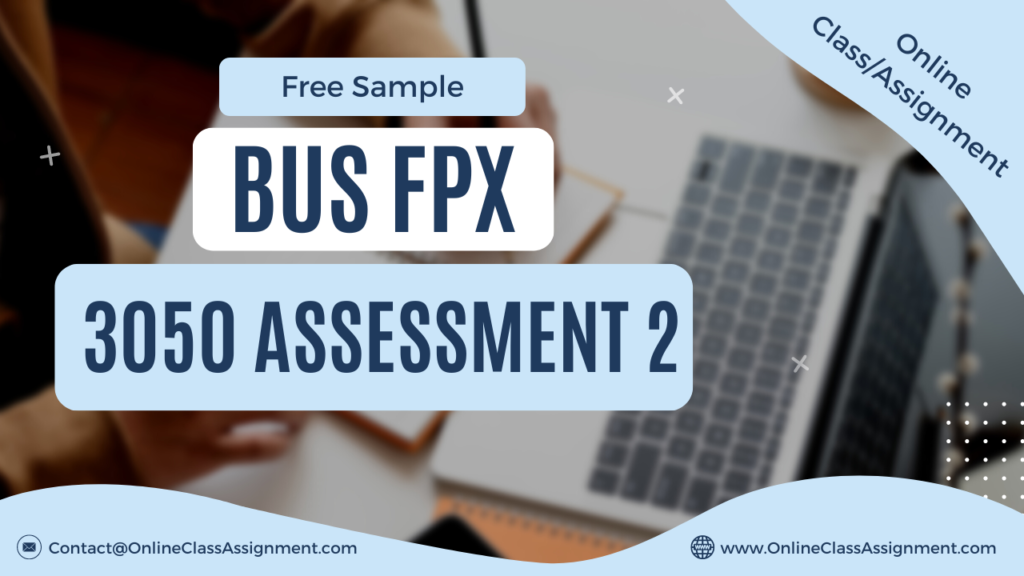BUS FPX 3050 Assessment 2 Responding to Conflict

BUS FPX 3050 Assessment 2 Responding to Conflict
Student Name
Capella University
BUS-FPX3050 Fundamentals of Organizational Communication
Prof. Name
Date
Responding to Conflict
Part 1: Analyzing Approach to Address Caustic Organizational Culture
The Emergency Operations Center (EOC) team in Brown Trout Bay, composed of eight community leaders, is tasked with responding to a citywide water supply disaster. Each member brings significant power, autonomy, experience, or expertise from their respective fields. However, the sudden transition to this emergency team requires the immediate establishment of specific procedures. The lack of central leadership and organizational structure leads to caustic communication during initial exchanges. To address this, an assessment and transformation of organizational culture are necessary.
Organizational culture encompasses internal values, rituals, and behaviors within a group. The EOC team members, although part of the same municipal government, operate within distinct departments with their own cultures. Additionally, the EOC team itself needs to establish its unique organizational culture, considering the stressful conditions and the high-stakes nature of their duties.
Core Organizational Issues
Individual belief systems significantly influence workplace communication. Effective communication can be nurtured through an organizational culture that considers employees’ internal beliefs. Understanding the diverse communication styles among team members is crucial. Various frameworks describe communication styles, such as dominant, influencer, conscientious, steady, analytical, intuitive, functional, and personal.
In the email exchange, Brad Nygard demonstrates a passive-aggressive yet dominant communication style, while Matthew Chu exhibits an aggressive style. Both styles can hinder effective communication. Understanding these styles is essential for conflict resolution and fostering innovation within teams.
Organizational Communication Strategies
Addressing conflicts requires acknowledging feelings, facilitating group discussions, and establishing conflict resolution plans. Email can serve as a non-verbal written channel for conflict resolution, fostering a safe workplace environment and clarifying organizational rules and procedures. Democratic leadership, characterized by high participation levels and group engagement, is suitable for the EOC team.
Part 2: Response Email
Hello Team,
I apologize for joining the email thread late. I acknowledge the confusion regarding our meeting location and appreciate everyone’s input. Our unique protocol necessitates specific procedures for the Emergency Operations Center, which will be provided at our first meeting.
After reviewing the responses, it’s evident that the majority prefers a Skype meeting for our first discussion, with an in-person meeting planned for later. Moving forward, I aim to facilitate decision-making and maintain focus on addressing the city’s water supply emergency.
Our protocol will prioritize democratic decisions, ensuring everyone’s input is considered. I encourage direct communication for any concerns, and I’m available for one-on-one discussions. Let’s collaborate effectively to fulfill our responsibilities on the EOC team.
Looking forward to our virtual check-in and orientation at 1:00 pm.
Best regards,
References
Blanche, A. (2021). 4 communication styles and how to navigate them in the workplace. Work Life by Atlassian. https://www.atlassian.com/blog/inside-atlassian/how-to-navigate-diversecommunication-styles-at-work
Capella University. (2021). Activity: Responding to Conflict. https://courserooma.capella.edu/webapps/blackboard/content/listContent.jsp? course_id=_318899_1&content_id=_10033043_1
Kelly, S., & MacDonald, P. (2019). A look at leadership styles and workplace solidarity communication. International Journal of Business Communication, 56(3), 432–448.
Hawaii Business. (2017). Embrace conflict. 63(1), 64–70.
Indeed. (2021). 4 Communication Styles. Indeed Career Guide. https://www.indeed.com/careeradvice/career-development/communication-styles
Mayhew, R. (2016, November 9). How to Stop Conflict in the Workplace Before It Happens. Work – Chron.Com. https://work.chron.com/stop-conflict-workplace-before-happens-5813.html
BUS FPX 3050 Assessment 2 Responding to Conflict
Nordstrom, K. (2020). The Communication Process: Sender and Receiver. SOPHIA. https://capella.sophia.org/spcc/developing-effective-teams-2/unit1/study-guide/10494/thecommunication-process-sender-and-receiver-2
Rider University. (2019, October 15). Understanding the Four Main Communication Styles in the Workplace. https://online.rider.edu/blog/communication-styles-in-the-workplace/
Toppr. (n.d.). Communication. https://www.toppr.com/guides/businessstudies/directing/communication/
Whitney. (2020, May 27). 4 Workplace Communication Styles (And How They Impact Your Business). IGW. https://infographicworld.com/communication-styles-workplace/
YEC. (2019). 7 Steps to Resolve and Prevent Workplace Conflicts. Inc.Com | Young Entrepreneur Council. https://www.inc.com/young-entrepreneur-council/7-steps-to-resolve-prevent-workplaceconflicts.html
BUS FPX 3050 Assessment 2 Responding to Conflict
Get Capella University Free Business Samples
BUS FPX 3007
BUS FPX 3011
BUS FPX 3021
BUS FPX 3022
BUS FPX 3030
BUS FPX 3040
- BUS FPX 3040 Assessment 6 Labor Relations Recommendations
- BUS FPX 3040 Assessment 5 Employment Law
- BUS FPX 3040 Assessment 4 Compensation and Benefits
- BUS FPX 3040 Assessment 3 Retention and Separation
- BUS FPX 3040 Assessment 2 Performance Management and Training
- BUS FPX 3040 Assessment 1 Recruitment and Selection
BUS FPX 3050
BUS FPX 4012
